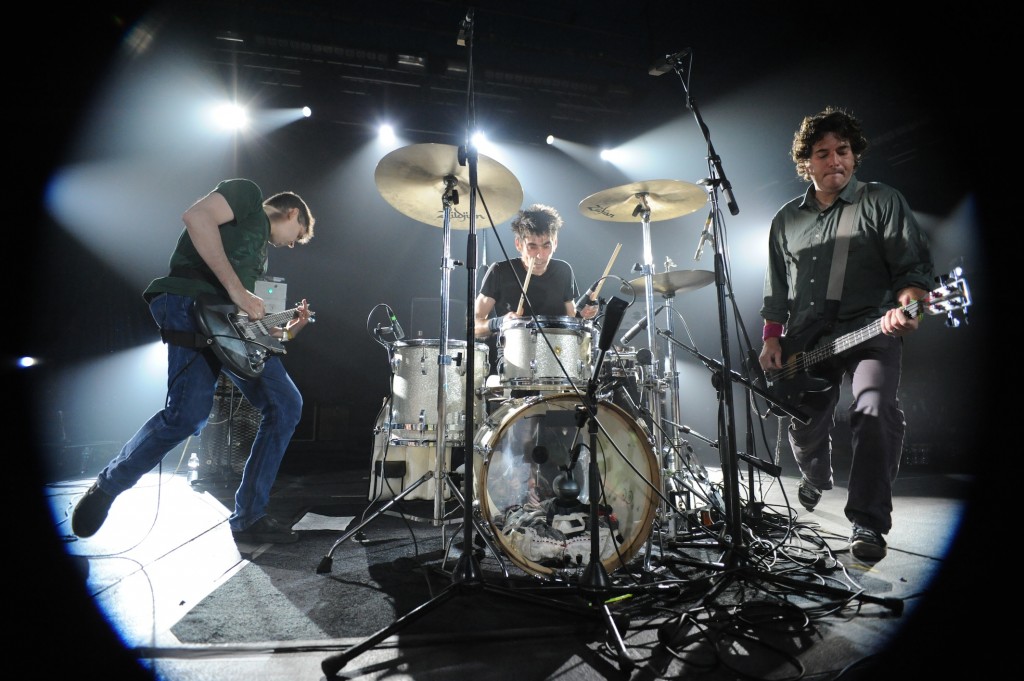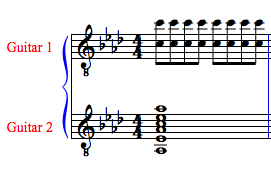
Released April 28, 2009 Pink Mountain’s “Untitled” 2nd album represents an intriguing and, in my opinion, inviting blend of contemporary composition and improvisation techniques within the rock idiom. Despite its unique qualities the album remains woefully unknown and underrated, unappreciated and overall unlistened to since its release. To that end, when it was released only 500 copies of the vinyl were produced, and it remains available from Sick Room Records as of this writing.
I first learned of this album through Signal To Noise magazine, which is a phenomenal publication for any of those that may be interested in experimental and otherwise unknown music. That magazine has dubbed itself “The biannual journal of improvised, experimental and unusual music” and as far as I know it is the best of its kind. Though subscription service is currently suspended I truly hope that they begin publishing regularly again. Times are tough in the publishing industry, and I’m sure that publishing a magazine with such a specific target audience is even tougher.
It was in issue #55 for Fall 2009, to be specific, that I came to learn of the existence of Pink Mountain in a piece entitled “They’re Only in it for the Music.” Both that title as well as the subheading that states that they have “zero hope for mass appeal” summoning the specter of Frank Zappa. Though their music is a similar mix of art-rock there are many notable differences. For starters, where Zappa was influenced by and mimicked (to death) the compositional styles of Stravinsky and Varese, Pink Mountain are a bit more current with their influences. They work with contemporary, American influences; influences that don’t sound like they originate in the downtown scene of New York, but rather lie with the improv techniques of the West Coast, specifically the experimentalism and improvisatory techniques that come out of Mills College in Oakland. The album explores heavy use of noise and free form improv over layers of tight foundational work that cycles regularly in shifting tectonic plates of polymeter and minimalist repetition.
I remember playing this album for a friend that’s pretty into “out” jazz, and he remarked nearly immediately that he couldn’t handle it. He said that it was “a bit too far for me…I don’t know if I can get into this.” Perhaps it was the distortion, or the way that the album opens with near chaos that continues to build, that got him, or rather didn’t get him.
There are tracks that are more to one side of the experimental-rock rift and those that swing far to the other side. And, as expected, there are those moments that manage to bridge that gap.
“Foreign Rising” is a clever renaming of the James Tenney piece “For Anne (rising)” that makes use of a Shepard Tone, which is an aural illusion that sounds like a continual ascent that could potentially go on forever. Think of it like the sound equivalent of one of those barbershop poles where the stripe seems to continue to rise out of the bottom for as long as you look at it. Of course this is a re-imagining of the original electronic piece by Tenney that is a lot more stripped down than. Pink Mountain adds a bit of an accelerando, jazz drumming that grows continually more complex as the piece continues and some other ringing harmonics, and various other buzzing or otherwise distorted sounds (and vocals) over top.
“Fine Print” screeches and squeals over a rock-solid drumbeat with woodwinds that ties the end of the album to the beginning , making the cloud of atmospheric noise a contorting leitmotif of the work as a whole. The lyrics of “Fine Print” are concerned with the inner non-workings of the music industry, which are then combined with instrumentation and composition practices that eschew most of the principles of rock music writing. The breakdown in the song features the a ragged bass sound with drums that are locked into a constantly shifting 7/8 that is in some respects rock steady, while simultaneously it is anything but.
It’s a diatribe against the commercial music industry in every way possible. Basically, the entire album is, but it doesn’t make a point of addressing it overtly until this song. In a way it is like the band is saying, “yes, we are aware of the limited potential for recognition with this album, and this is how much we don’t care.” The song aligns them philosophically with Steve Albini’s famous tirade (that I reference every chance that I get).
Speaking more to the polyrhythmic structure that is present throughout most of the songs, “Howling Fantods” (an “Infinite Jest” reference no doubt. It matches nicely with the Pynchon nod in the title of their song “V.,” a creepy instrumental with what sounds like bowed cymbals (?) and tense, brittle harmonics. And their music matches that post-modern mindset, sudden shifts of texture, several layers of action, the re-working of concepts [re-packaging, if you will] and the steady, fluid mixture of high-art with low in that rock and jazz influences are thrown in a blender with well thought out contemporary classical compositional techniques [prepared piano, Shepard Tone, different levels of metric borrowing/time streams a la Elliott Carter, and the list goes on) marches dutifully into the prog realm with its additive rhythm that appends an increasing number of strong beats to the end of a 7/8 measure, stretching out the phrases before once again collapsing into a controlled chaos. The moments that don’t feature that persistent additive rhythm stretch time in their own way by at first dropping any sense of beat altogether, while hinting at the motive melodically, and later slowing time in a complex metric modulation.
The most obvious and aurally shocking element that Pink Mountain puts to work is the mind-warp pulse shifts of “Eternal Halflife” and its reprise “Eternal Shelflife” where a steady 4/4 meter with the usual (for rock tunes) strong accents on 2 and 4 starts off unsurprisingly with a clear texture of understated drums with a seemingly half-hearted guitar that sits on one chord, non-chalantly strumming eighth notes. After two measures, easily enough time such that one’s mind settles into passive acceptance, the guitar shifts upwards while the drums subdivide each half-note into 5, giving the impression of a tempo increase, but that is only another illusion (they seem to be making a theme of aural illusions on this album what with the Shepard Tone that I have mentioned a few other times and now this jarring metric shift that feels like a tempo shift but it isn’t. I would classify this as maybe a form of different simultaneous tempo streams), as the snare drum continues to accent beats 2 and 4. The pattern is then repeated but with each bar divided into 3 this time, seemingly slowing the piece. It would be an understatement to say that this is simply an interesting phenomenon to experience. The first time that I heard it I came to the realization that I had never experienced anything like that in music before. And that is quite a rare circumstance indeed when you can actually experience something in music that you have never heard before.
The band does play with tempo and rhythm across the entire album, so much so that there is no point of reference for what “normal” might mean. Even in moments where there isn’t anything particularly interesting (that’s, of course, a relative term) happening, say for example in certain parts of “Thee Red Lion.” The texture in that track is sparse for the most part, but the band takes the opportunity to really lean back in the bar. They are pushing that meter back and making those bars last as long as they can without changing the number of beats in a measure and also without changing the tempo. To my ear this element of their playing makes that track sound even heavier that it would be if it was played square.
Perhaps that is one of the reasons that I am so attracted to this album. One of the reasons that I continually go back to it. Funny tidbit: Sam Coomes, the singer here, is also in the (comparatively much more well known) band Quasi (another band that I have talked about ad nauseum on this blog) with Janet Weiss. Janet was the drummer for Sleater-Kinney, Stephen Malkmus and the Jicks, and now Wild Flag (in addition to Quasi). The point is that I have known of all of those bands, except for Quasi, which I only came to know after becoming very familiar with Pink Mountain. I tend to do things backward sometimes.
The mixture of stylistic approach on this album reaches far beyond the classification of rock or jazz or classical. It combines elements of all of those things in a fairly tight package. There isn’t one song that showcases a single one of those elements, as they are all mixed evenly throughout. As I have mentioned before on this blog, one of my goals in writing and in studying music is to show that the categories and the classifications that we heap onto music are, for the most part, meaningless. The intermingling of elements is an important part of the post-modern aesthetic, and is showcased on many albums of the past ten years. Pink Mountain’s “Untitled” is one such album that not only defies classification, but seemingly obliterates it.






